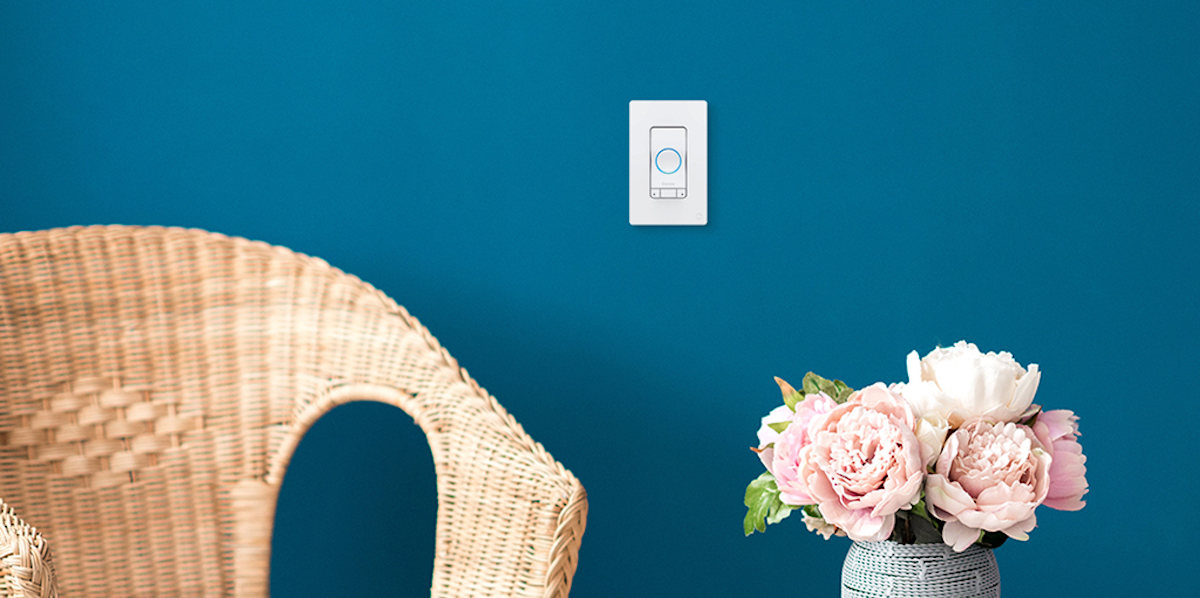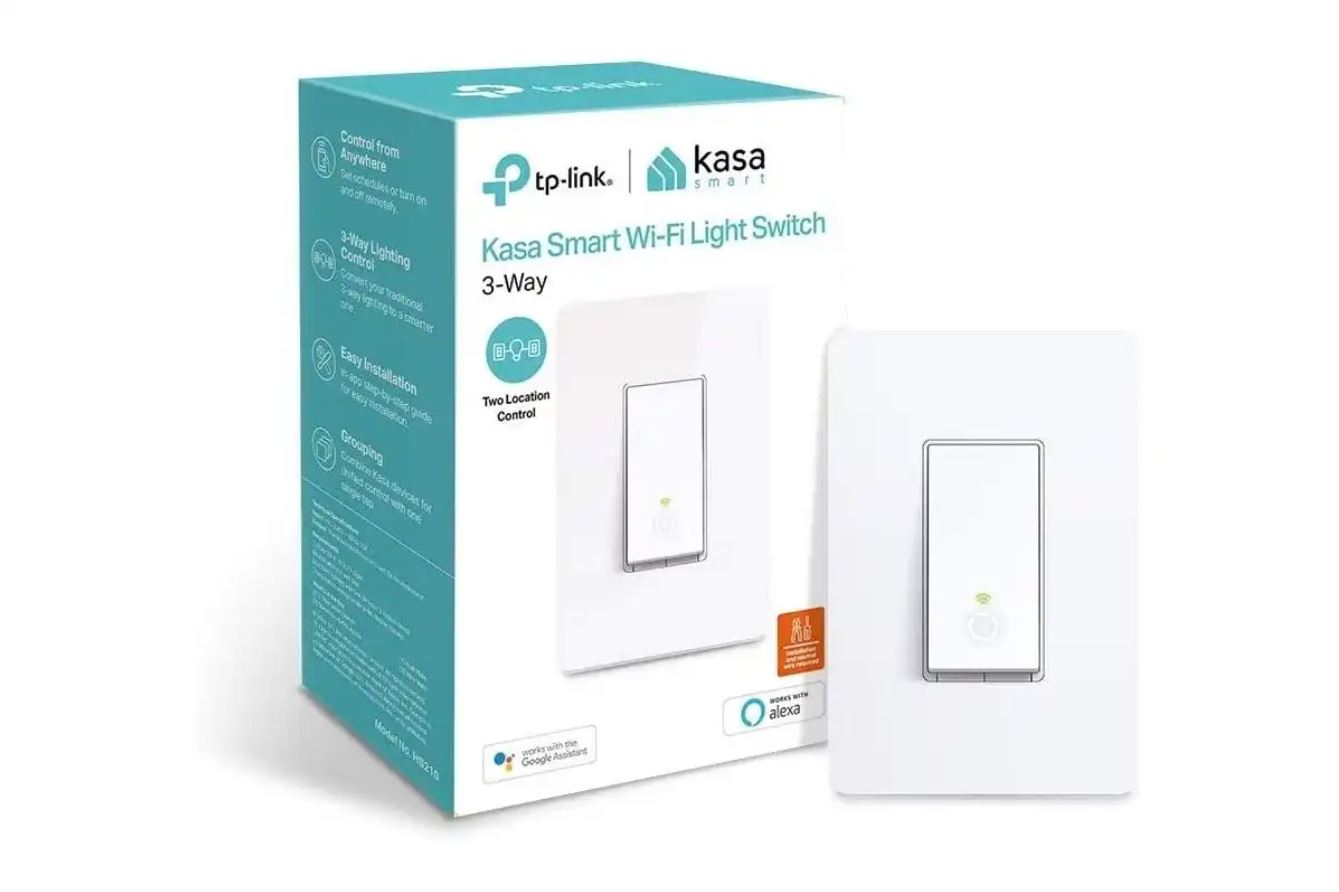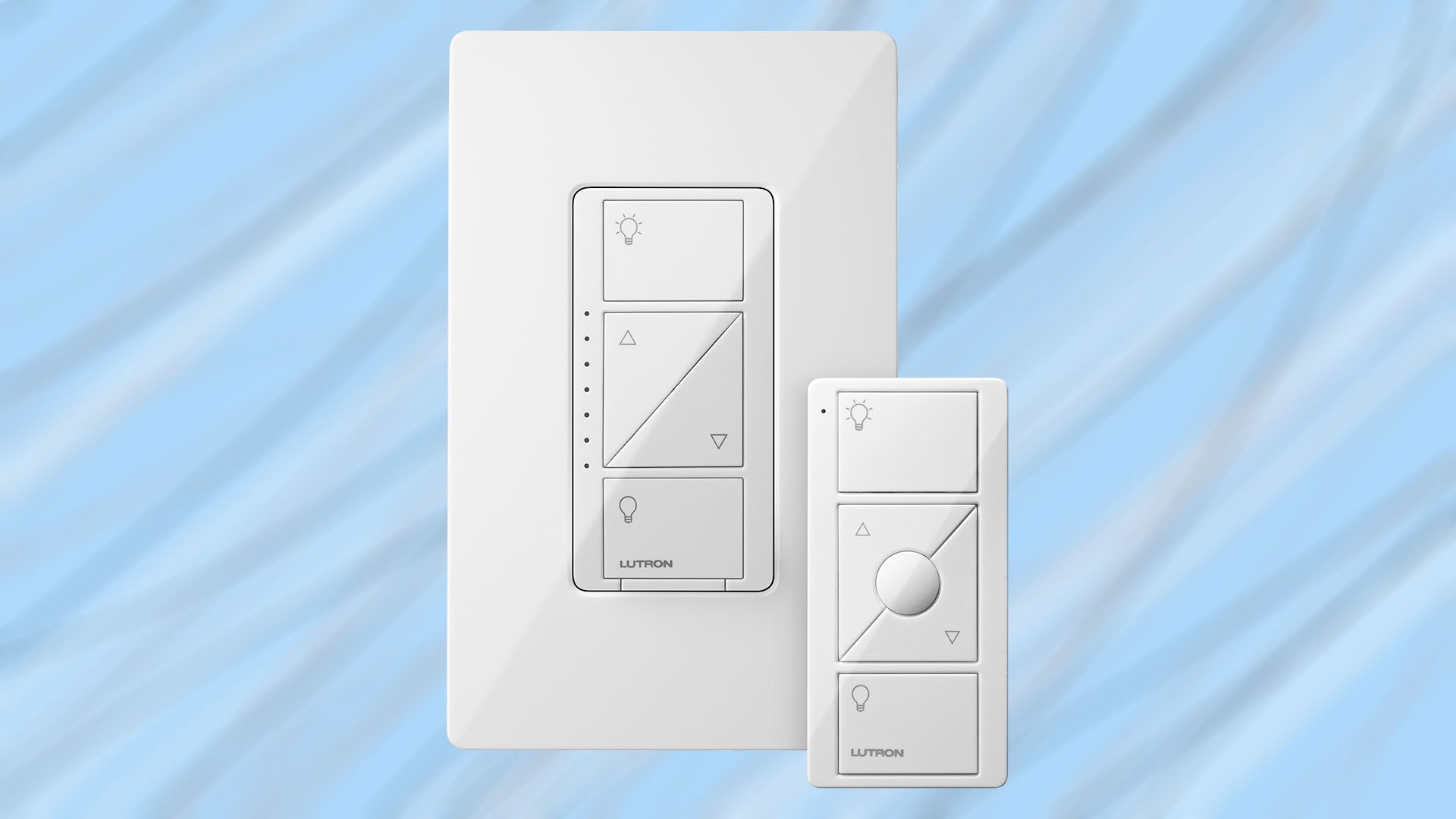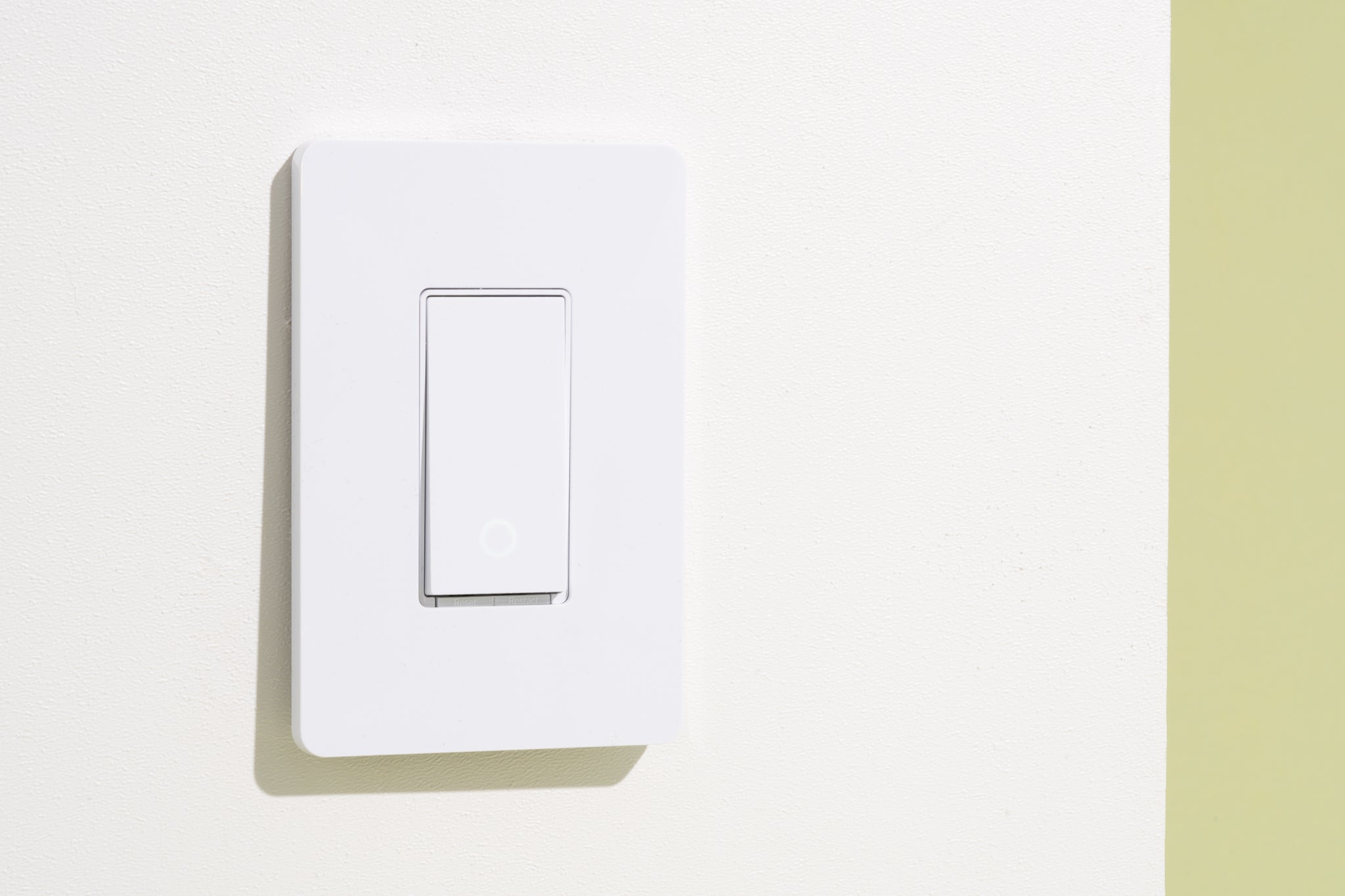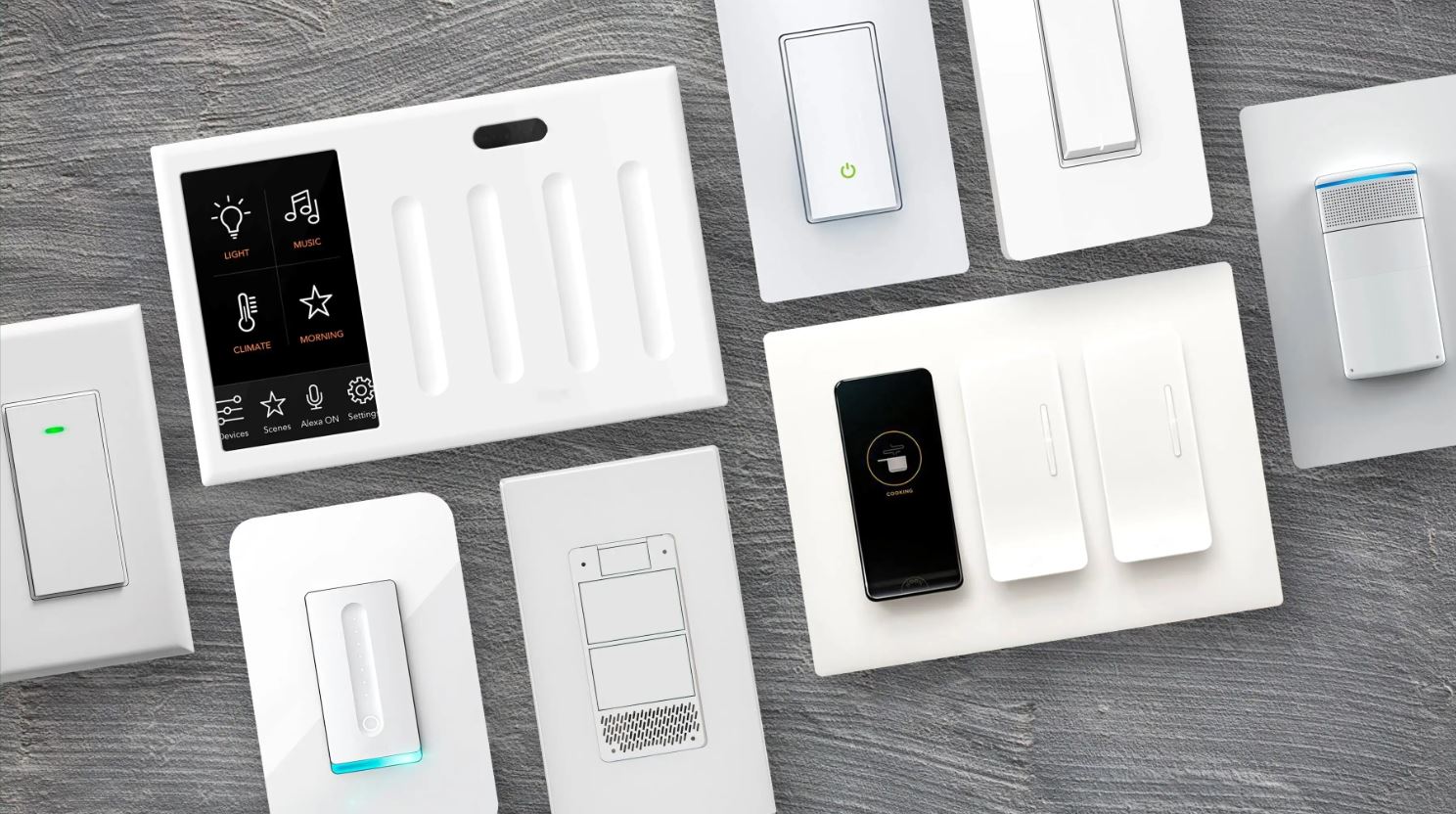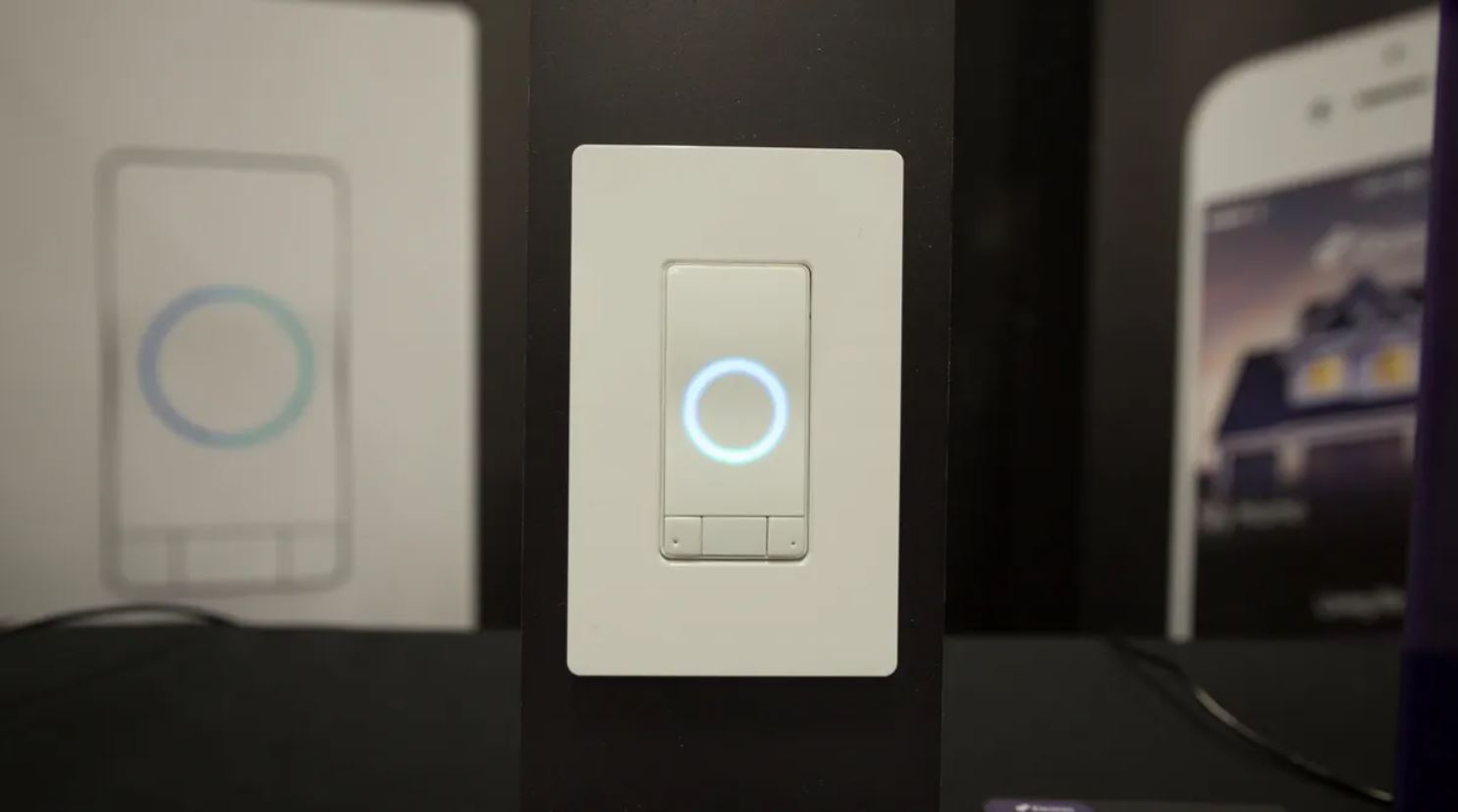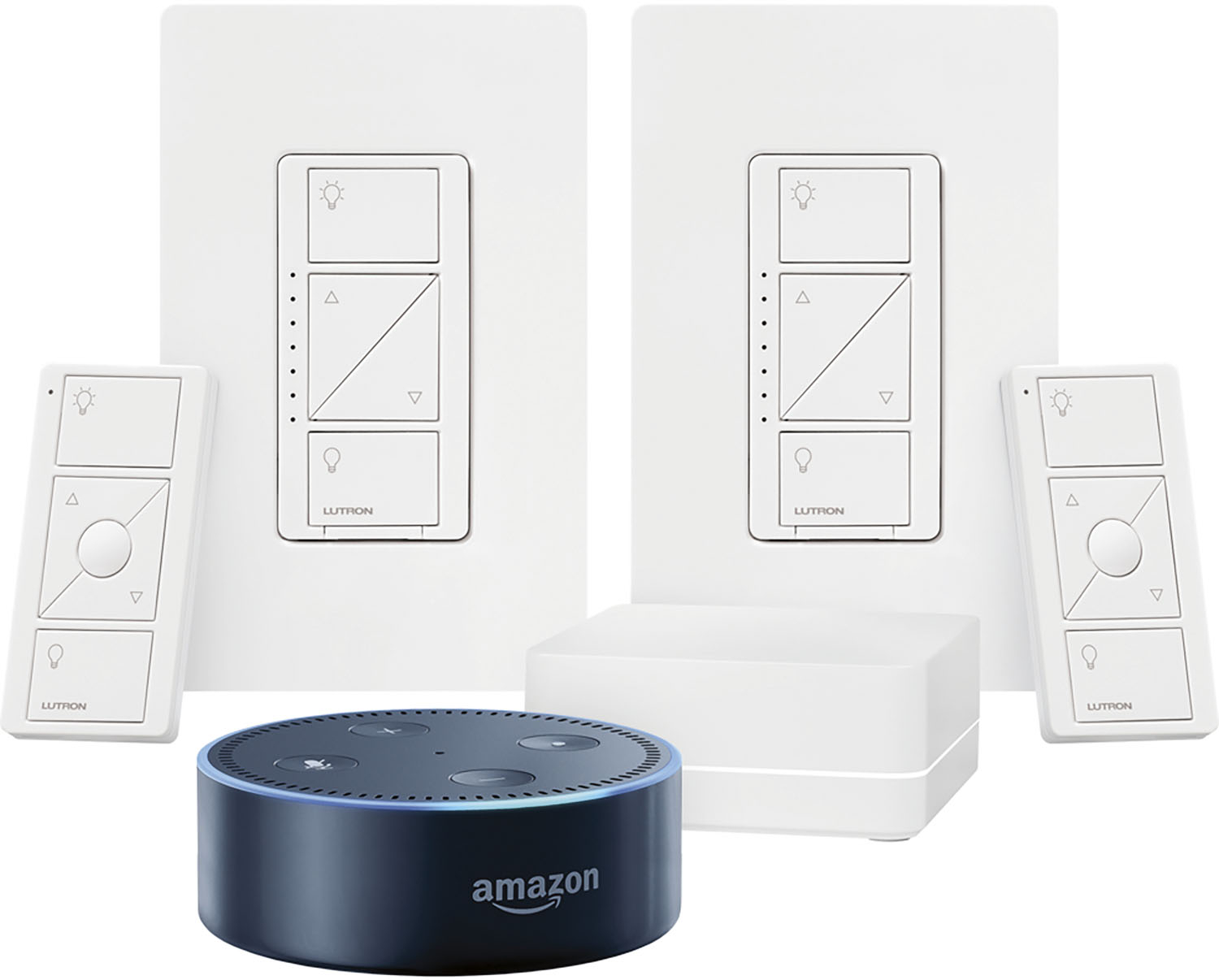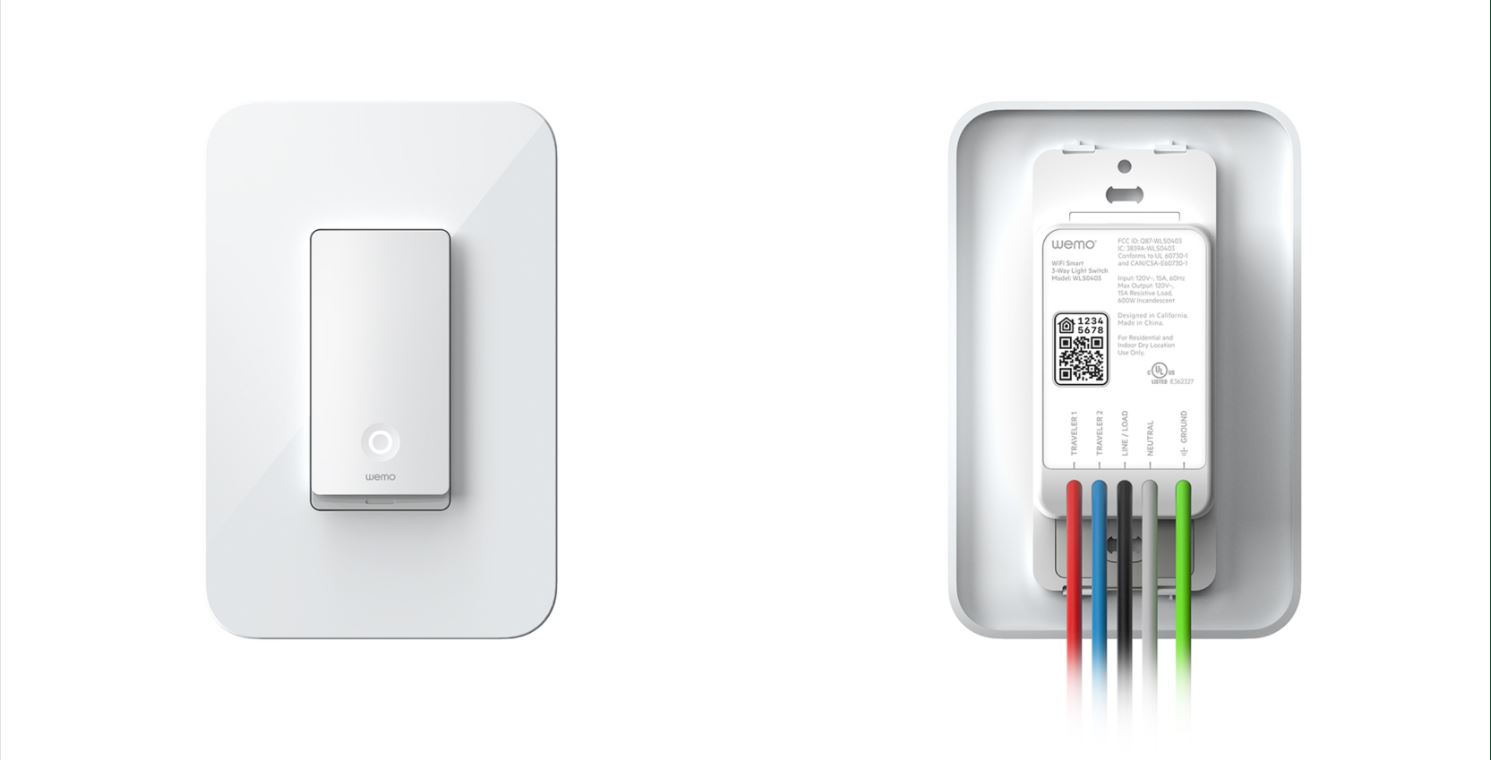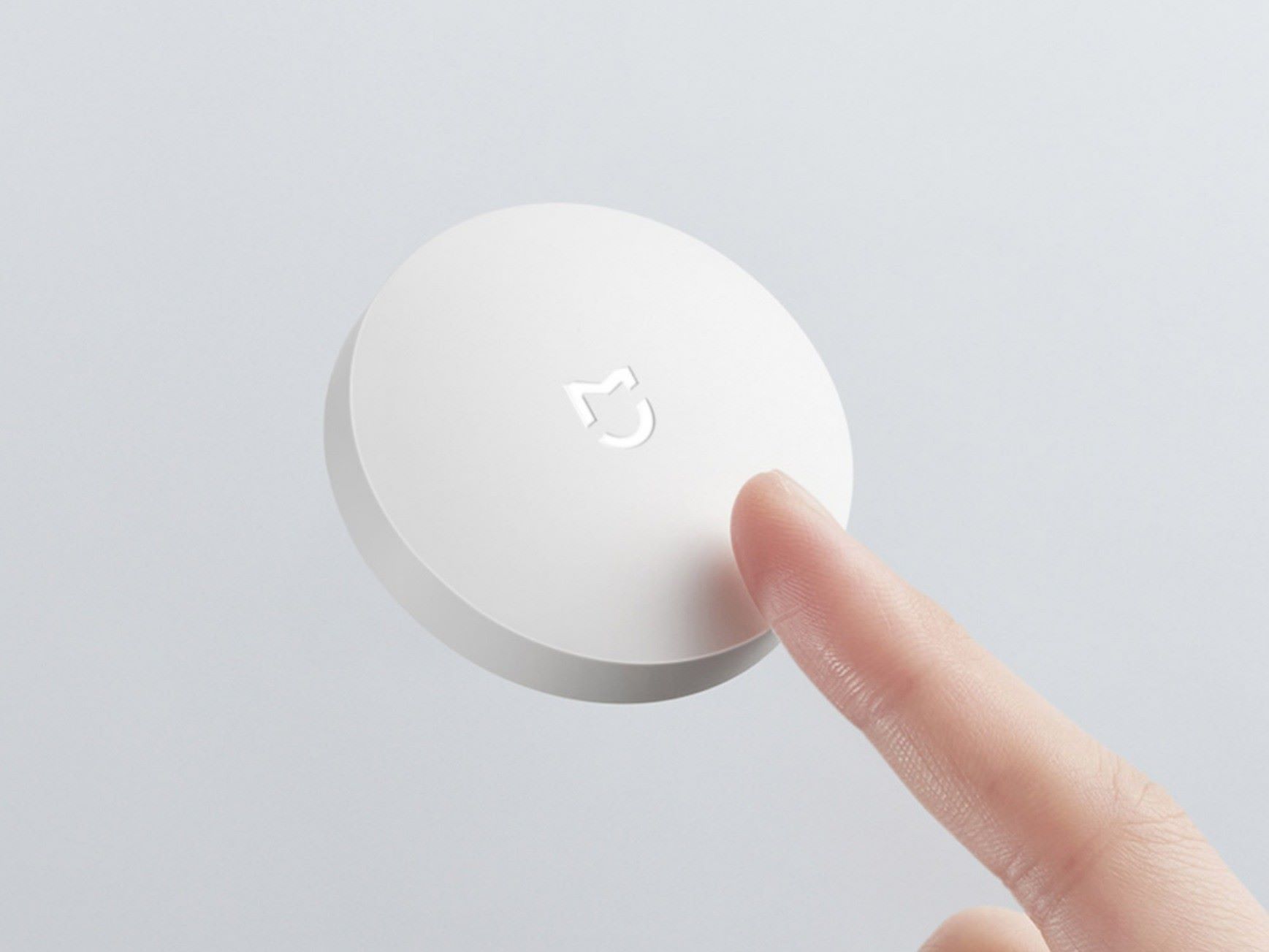Introduction
Smart home technology has revolutionized the way we interact with our living spaces, providing convenience, comfort, and control at our fingertips. Among the many innovations in smart home technology, smart light switches have gained popularity for their ability to transform ordinary lighting systems into interconnected and customizable features. With their advanced capabilities, smart light switches offer a seamless and intelligent way to control your lights, enhancing both the aesthetic and functional aspects of your home.
But what exactly is a smart light switch? How does it work? In this article, we will delve into the world of smart light switches, exploring the key features and functions that make them such a valuable addition to any modern home.
A smart light switch is a device that replaces your traditional light switch and allows you to control your lights using various methods such as Wi-Fi connectivity, voice commands, or a mobile app. Unlike conventional switches, smart light switches offer a wide range of features that bring convenience, energy efficiency, and customization to your lighting system.
One of the main advantages of a smart light switch is its ability to connect to your home’s Wi-Fi network. By connecting to Wi-Fi, the switch becomes accessible from anywhere within the range of your network, whether you are in another room or miles away from home. This opens up a world of possibilities for controlling your lights remotely and integrating them with other smart devices in your home.
Another highlight of smart light switches is their compatibility with voice control systems such as Amazon Alexa or Google Assistant. With voice commands, you can effortlessly turn your lights on or off, dim them to the desired level, or even change their color. This hands-free control adds a level of convenience and ease to your daily routine, allowing you to control your lights with a simple verbal command.
Additionally, smart light switches come with dedicated mobile apps that give you full control over your lighting system. Through these apps, you can create custom lighting scenes, schedule when your lights turn on or off, and adjust brightness levels according to your preferences. This level of customization allows you to personalize the atmosphere of your living space, whether you’re setting the perfect ambiance for a cozy movie night or creating a bright and vibrant environment for a gathering with friends.
What is a smart light switch?
A smart light switch is a modern and innovative device that replaces your conventional light switch, enabling you to control your lights in a more intelligent and efficient way. Unlike traditional switches, smart light switches offer a range of advanced features and connectivity options, bringing convenience, energy-saving capabilities, and customization to your lighting system.
At its core, a smart light switch functions similarly to a standard switch by allowing you to turn your lights on and off. However, what sets it apart is its ability to provide additional control options and integrate with other smart home devices.
One of the key features of a smart light switch is its Wi-Fi connectivity. By connecting to your home’s Wi-Fi network, the switch becomes accessible through your smartphone, tablet, or other connected devices. This means that you can control your lights remotely, whether you’re in a different room or away from home altogether. With the tap of a button on your smartphone, you can easily turn your lights on or off without having to physically interact with the switch.
In addition to Wi-Fi connectivity, many smart light switches are also compatible with voice control systems. This means that you can use voice commands to control your lights through popular voice assistants like Amazon Alexa or Google Assistant. Whether you’re busy cooking in the kitchen or relaxing on the couch, you can simply say a command like “Hey Alexa, turn off the lights” and your smart light switch will respond accordingly. This hands-free control adds a level of convenience and ease to your daily routine.
Furthermore, smart light switches often come with dedicated mobile apps that provide extensive control over your lighting system. Through these apps, you can create custom lighting scenes, adjust brightness levels, and even set schedules for when your lights should turn on or off. For example, you can program your lights to automatically turn on at sunset or dim them gradually in the evening to create a calming atmosphere before bedtime. The ability to customize your lighting according to your preferences not only enhances the ambiance of your home but also contributes to energy efficiency by eliminating unnecessary energy consumption.
By replacing your traditional light switch with a smart light switch, you can transform your lighting system into a more intuitive and versatile setup. From remote control and voice commands to personalized schedules and energy-saving features, smart light switches empower you to create the perfect lighting environment for any situation.
How does a smart light switch work?
A smart light switch may seem like a complex device, but its underlying technology is relatively straightforward. To understand how a smart light switch works, let’s explore the key components and processes involved in its operation.
The first component of a smart light switch is its connection to your home’s Wi-Fi network. This connection allows the switch to communicate with your smartphone or other connected devices. It’s important to note that not all smart light switches require a hub or additional hardware to connect to Wi-Fi. Some switches have built-in Wi-Fi capabilities, while others may require a separate hub for connectivity.
Once connected to Wi-Fi, the smart light switch becomes accessible through a dedicated mobile app or voice control system. Through the app, you can control various aspects of your lighting, such as turning lights on or off, adjusting brightness levels, and creating customized lighting scenes. Voice control systems, such as Amazon Alexa or Google Assistant, allow you to control your lights using simple voice commands.
In terms of the physical installation, a smart light switch is typically installed in the same manner as a traditional switch. However, it’s essential to follow the manufacturer’s instructions to ensure proper installation and electrical safety.
When the smart light switch is turned on or off, it sends a signal to your lighting fixtures, just like a regular switch. The difference is that a smart light switch can communicate with the fixtures wirelessly, through your home’s Wi-Fi network. This wireless communication enables you to control your lights from anywhere within the range of your network, using either the mobile app or voice commands.
Additionally, most smart light switches offer scheduling and automation features. This means you can program your lights to turn on or off at specific times or based on certain triggers. For example, you can schedule your lights to turn on automatically at sunset or set them to switch off when you leave home. These scheduling capabilities can enhance security, energy efficiency, and convenience.
Smart light switches also often include energy monitoring features. These features allow you to track your energy usage and monitor how much electricity your lights are consuming. By having this information at your fingertips, you can make informed decisions about your energy consumption and potentially reduce your electricity bills.
Overall, a smart light switch combines wireless technology, connectivity to your home’s Wi-Fi network, and intuitive control options through a mobile app or voice commands. By leveraging these features, smart light switches provide a seamless and intelligent way to control your lighting, enhancing both the functionality and energy efficiency of your home.
Wi-Fi Connectivity
One of the key features of a smart light switch is its ability to connect to your home’s Wi-Fi network. This Wi-Fi connectivity enables seamless communication between the switch and your smartphone or other connected devices, giving you remote access and control over your lights.
When a smart light switch connects to Wi-Fi, it becomes accessible from anywhere within the range of your network. This means that you can control your lights even when you’re not physically present in the same room or even at home. Whether you’re in bed, on the couch, or miles away, you can use your smartphone or tablet to turn your lights on or off, adjust their brightness levels, or activate pre-set scenes.
Wi-Fi connectivity also allows for easy integration with other smart home devices. Many smart light switches are compatible with popular smart home platforms, such as Google Assistant or Amazon Alexa. This integration allows you to create voice commands that control not just your lights, but also other connected devices in your home. For example, you can say, “Hey Google, turn on the living room lights and set the thermostat to 70 degrees” to create a personalized ambiance with just a simple command.
Another advantage of Wi-Fi connectivity is the ability to control your lights when you’re away from home. Whether you forgot to turn off the lights before leaving or you want to make it appear as though someone is home for added security, you can simply use the mobile app to control your smart light switch remotely. This feature provides peace of mind and allows you to maintain control over your lighting even when you’re on vacation or away for an extended period.
It’s worth mentioning that the Wi-Fi signal strength and stability play a crucial role in the performance of your smart light switch. For optimal functionality, ensure that your Wi-Fi network is stable and has good coverage throughout your home. A weak or unstable Wi-Fi signal may result in delays or disconnections when controlling your lights remotely.
Overall, Wi-Fi connectivity is a fundamental feature of smart light switches that enhances flexibility and convenience. By connecting to your home’s Wi-Fi network, these switches provide seamless and intuitive control over your lighting system, whether you’re at home or away.
Voice Control
One of the most convenient and popular features offered by smart light switches is voice control. Voice control allows you to control your lights using simple verbal commands, making it incredibly easy and hands-free to adjust your lighting to your liking.
Smart light switches that support voice control are typically compatible with popular voice assistants, such as Amazon Alexa, Google Assistant, or Apple Siri. By integrating your smart light switch with these voice assistants, you can control your lights using voice commands, providing a seamless and intuitive experience.
To give a voice command to control your lights, you simply need to activate the voice assistant by saying a specific wake word (e.g., “Alexa,” “Hey Google,” or “Hey Siri”). Once the voice assistant is activated, you can give commands like “turn on the lights,” “dim the lights to 50%,” or “set the lights to blue.” The smart light switch then receives and interprets these commands, adjusting the lighting accordingly.
Voice control offers a convenient hands-free way to control your lights, ensuring that you can perform lighting adjustments without needing to physically interact with a switch or a mobile app. This feature can be especially useful when your hands are occupied, such as when you’re cooking, carrying groceries, or relaxing on the sofa.
Additionally, voice control allows for easy integration with other smart home devices and routines. You can create customized scenes or routines that combine the control of your lights with other smart devices. For example, you can set up a “movie night” routine that dims the lights, closes the blinds, and turns on the TV with a single voice command.
It’s important to note that voice control requires a reliable internet connection and the voice assistant installed on a compatible device, such as a smart speaker or a smartphone. Additionally, you may need to set up and configure the voice assistant and smart light switch to work together through the respective mobile apps or settings.
Overall, voice control adds a new level of convenience and simplicity to controlling your lights. By integrating your smart light switch with popular voice assistants, you can effortlessly adjust your lighting with just a few spoken words, creating a truly hands-free and immersive smart home experience.
Mobile App Control
Mobile app control is a vital feature provided by smart light switches, offering a user-friendly and intuitive way to control and customize your lighting system directly from your smartphone or tablet.
Smart light switches are typically accompanied by dedicated mobile apps that are available for both iOS and Android devices. These apps serve as a centralized hub for managing your smart light switch and its functions.
Once you have the mobile app installed on your device, you can easily connect and pair it with your smart light switch. This connection grants you full control over your lighting system, allowing you to turn your lights on or off, adjust brightness levels, and even create customized lighting scenes.
With mobile app control, you have the convenience of managing your lights from anywhere within the range of your home Wi-Fi network. If, for example, you forgot to turn off the lights before leaving the house, you can simply open the app on your smartphone and switch them off remotely. This feature not only saves energy but also provides peace of mind and helps you maintain control over your lighting even when you’re away from home.
One of the significant advantages of mobile app control is the ability to create personalized lighting scenes. Lighting scenes allow you to set specific combinations of light intensity, color, and even different areas of your home that should be activated or deactivated simultaneously. You can create scenes such as “Morning,” “Movie Night,” or “Dinner Party,” with each scene adjusting the lighting to suit the desired ambiance or activity.
Moreover, mobile app control often includes scheduling options, enabling you to program your lights to turn on or off at specific times. This feature can be particularly useful when you’re away from home, as you can create the illusion of someone being present by scheduling your lights to turn on and off at regular intervals.
In addition to control and scheduling, mobile apps for smart light switches often provide energy monitoring features. These features allow you to track and monitor your energy usage, providing insights into how much electricity your lights are consuming. With this information, you can make informed decisions about your energy usage, identify potential areas for energy savings, and ultimately reduce your electricity bills.
Overall, mobile app control provides a convenient and user-friendly interface for managing your smart light switch. From remote control to customized scenes and energy monitoring, mobile apps empower you to have complete control over your lighting system, creating a personalized and efficient lighting experience.
Scheduling and Automation
Scheduling and automation features are key functionalities offered by smart light switches, allowing you to customize and optimize your lighting according to your preferences and lifestyle.
With scheduling capabilities, you can program your smart light switch to turn your lights on or off at specific times. For example, you can schedule your lights to automatically turn on in the morning to wake you up gently, or you can set them to switch off at a certain time in the evening to conserve energy. This level of automation eliminates the need for manual control, ensuring that your lights adhere to your desired schedule effortlessly.
Scheduling becomes even more powerful when combined with other automation features. Many smart light switches offer advanced automation options that allow for greater customization and integration with other smart home devices. For instance, you can create a “goodnight” routine that not only turns off the lights but also locks the doors, adjusts the thermostat, and activates the security system with a single command or schedule.
Automation also enables the creation of lighting scenes, which are pre-set configurations of your lights to create a specific ambiance or atmosphere. For example, you can create a scene called “Movie Night” that dims the lights, lowers the blinds, and turns on your home theater system, immersing you in the perfect movie-watching experience. With just a tap on your mobile app or a voice command, you can easily activate these scenes, eliminating the need for manual adjustments.
Furthermore, smart light switches often offer integration with external triggers and sensors, such as motion sensors or ambient light sensors. This integration allows for additional automation possibilities, where your lights can respond to specific events or conditions. For instance, you can set your lights to turn on automatically when motion is detected in a room, providing hands-free illumination when you enter a space.
The combination of scheduling and automation features adds convenience, energy efficiency, and enhanced security to your home lighting system. Whether you want to create a personalized lighting schedule, set up automated routines, or integrate your lights with other smart home devices, smart light switches give you the flexibility to customize and optimize your lighting according to your needs.
Energy Monitoring
Energy monitoring is a valuable feature offered by many smart light switches, allowing you to track and monitor the energy consumption of your lighting system. With this information, you can make informed decisions about energy usage, identify potential areas for energy savings, and ultimately reduce your electricity bills.
Smart light switches with energy monitoring capabilities provide real-time data on how much electricity your lights are consuming. This data can be accessed through the accompanying mobile app or integrated into a larger smart home energy management system. You can view detailed insights such as the power usage of individual lights, the total energy consumption of your lighting system, and even historical data to analyze trends over time.
By having access to this information, you can identify inefficient lighting setups or patterns of excessive energy usage. For example, you may notice that certain lights in your home consume more energy than others, allowing you to explore alternatives such as replacing them with more energy-efficient options, like LED bulbs. Additionally, you can analyze usage patterns, such as lights being left on for extended periods when not needed, and take corrective action to eliminate unnecessary energy waste.
Energy monitoring not only provides insights into energy consumption but also promotes awareness and empowers you to make conscious decisions about your energy usage habits. By being aware of how much energy your lights are consuming, you become more mindful of turning them off when not needed or dimming them to reduce energy usage.
Moreover, some smart light switches offer energy-saving features, such as energy-efficient modes or suggestions for optimal lighting levels. These features can help you maximize energy efficiency without compromising on comfort or convenience. For example, a smart light switch might provide recommendations on the ideal brightness level for energy savings during different times of the day.
Energy monitoring is not only beneficial for your electricity bills but also for the environment. By reducing unnecessary energy consumption, you contribute to lowering the overall demand for electricity, which in turn helps to reduce greenhouse gas emissions and conserve valuable resources.
In summary, energy monitoring provided by smart light switches gives you valuable insights into your lighting system’s energy consumption. With this information, you can identify areas for improvement, make informed decisions about energy usage, and actively work towards reducing your energy footprint while enjoying the convenience of smart lighting.
Compatibility with Other Smart Home Devices
One of the major advantages of smart light switches is their compatibility with other smart home devices. This interoperability allows for seamless integration and enhanced functionality within your smart home ecosystem.
Smart light switches have the ability to communicate and interact with a variety of other smart home devices, such as smart speakers, thermostats, door locks, security systems, and more. This integration enables you to create a truly interconnected and efficient smart home experience.
For instance, by connecting your smart light switch with a smart speaker, such as Amazon Alexa or Google Assistant, you can control your lights using voice commands. With a simple phrase like “Hey Siri, turn off the lights,” you can effortlessly manage your lighting without needing to touch a switch.
Integration with smart thermostats is another valuable feature of smart light switches. By connecting your lighting system with your thermostat, you can create energy-saving automations. For example, you can configure your lights to automatically turn off when the thermostat detects that you’ve left home. This integration not only enhances energy efficiency but also contributes to a more comfortable and convenient living environment.
Smart light switches can also be synchronized with other smart home devices to create coordinated lighting scenes and routines. For example, you can set up a “movie night” scene that simultaneously dims the lights, lowers the blinds, and turns on your home theater system. This synchronization creates an immersive and customizable experience that enhances the ambiance of your home and simplifies your daily routines.
Furthermore, smart light switches can integrate with security systems to enhance home safety. By linking your lighting system with your security system, you can configure your lights to turn on and off in a randomized pattern when you’re away, giving the impression that someone is home. This automated lighting control adds an extra layer of security, deterring potential intruders.
The compatibility of smart light switches with other smart home devices expands the possibilities for enhanced convenience, energy efficiency, and security. It allows you to create a cohesive and interconnected smart home ecosystem where different devices work together seamlessly to simplify your daily life and improve the overall functionality of your home.
Installation Process
The installation process of a smart light switch may vary depending on the specific model and manufacturer. However, the general steps involved in installing a smart light switch are relatively straightforward. It is important to follow the manufacturer’s instructions carefully and ensure electrical safety throughout the process.
Here is a general overview of the installation process for a smart light switch:
- Turn off the power: Start by turning off the power supply to the existing light switch at your home’s electrical panel. This step is crucial to ensure your safety while working with electrical wiring.
- Remove the existing switch: Carefully remove the faceplate and unscrew the existing light switch from the electrical box in the wall. Take note of the existing wiring connections and make sure to label or photograph them for reference.
- Wire the smart light switch: Follow the manufacturer’s instructions to wire the smart light switch. Typically, you will connect the wires from the switch to the corresponding wires in the electrical box. Make sure to secure the connections properly using wire nuts or other suitable connectors.
- Mount the smart light switch: Gently push the wires back into the electrical box, ensuring that the switch sits securely. Use the provided screws to attach the smart light switch to the electrical box. Double-check that the switch is level and aligned properly.
- Attach the faceplate: Once the switch is securely mounted, attach the faceplate provided with the smart light switch. This completes the physical installation of the switch.
- Restore power and configure: After verifying that the wiring connections are correct and secure, restore power at the electrical panel. Follow the manufacturer’s instructions to configure the smart light switch using the accompanying mobile app or other setup procedures specified.
- Test and finalize setup: Test the functionality of the smart light switch by turning the lights on and off using both the switch itself and the mobile app or voice commands. Make any necessary adjustments or configurations to ensure everything is working as desired.
It is essential to highlight that electrical work should be carried out by a qualified professional if you are not familiar with electrical systems or have concerns about your ability to complete the installation safely. Safety should always be the top priority when working with electrical wiring.
Overall, the installation process for a smart light switch involves replacing the existing switch, wiring the new switch properly according to the manufacturer’s instructions, and configuring it through a mobile app or other setup procedures. By following the instructions carefully, you can successfully install a smart light switch and enjoy the benefits of a more intelligent and convenient lighting system.
Conclusion
Smart light switches have revolutionized the way we control and interact with our lighting systems. With their advanced features and connectivity options, these devices offer convenience, customization, energy savings, and integration within a smart home ecosystem.
Through Wi-Fi connectivity, smart light switches allow remote control of your lights from anywhere within the range of your network. This feature provides flexibility and convenience, ensuring that you can easily manage your lighting, even when you’re away from home.
Voice control adds another layer of convenience, enabling you to control your lights using simple voice commands. By integrating with popular voice assistants, smart light switches offer a hands-free and intuitive way to adjust your lighting according to your needs or preferences.
Mobile app control provides a user-friendly interface that gives you full control over your lighting system. With features like scheduling, automation, and energy monitoring, you can create personalized lighting scenes, save energy, and easily track and manage your energy consumption.
Smart light switches also offer compatibility with other smart home devices, allowing for seamless integration and expanded functionality. From integrating with smart speakers and thermostats to synchronizing with security systems and creating coordinated routines, you can create a truly interconnected and efficient smart home experience.
Installing a smart light switch is a relatively straightforward process, but it is crucial to prioritize electrical safety and follow the manufacturer’s instructions carefully.
In conclusion, smart light switches are an excellent investment for any homeowner looking to enhance their lighting control and overall smart home experience. With their advanced features, convenience, and energy-saving capabilities, these devices offer a modern and efficient solution for managing and customizing your lighting according to your preferences and lifestyle.







